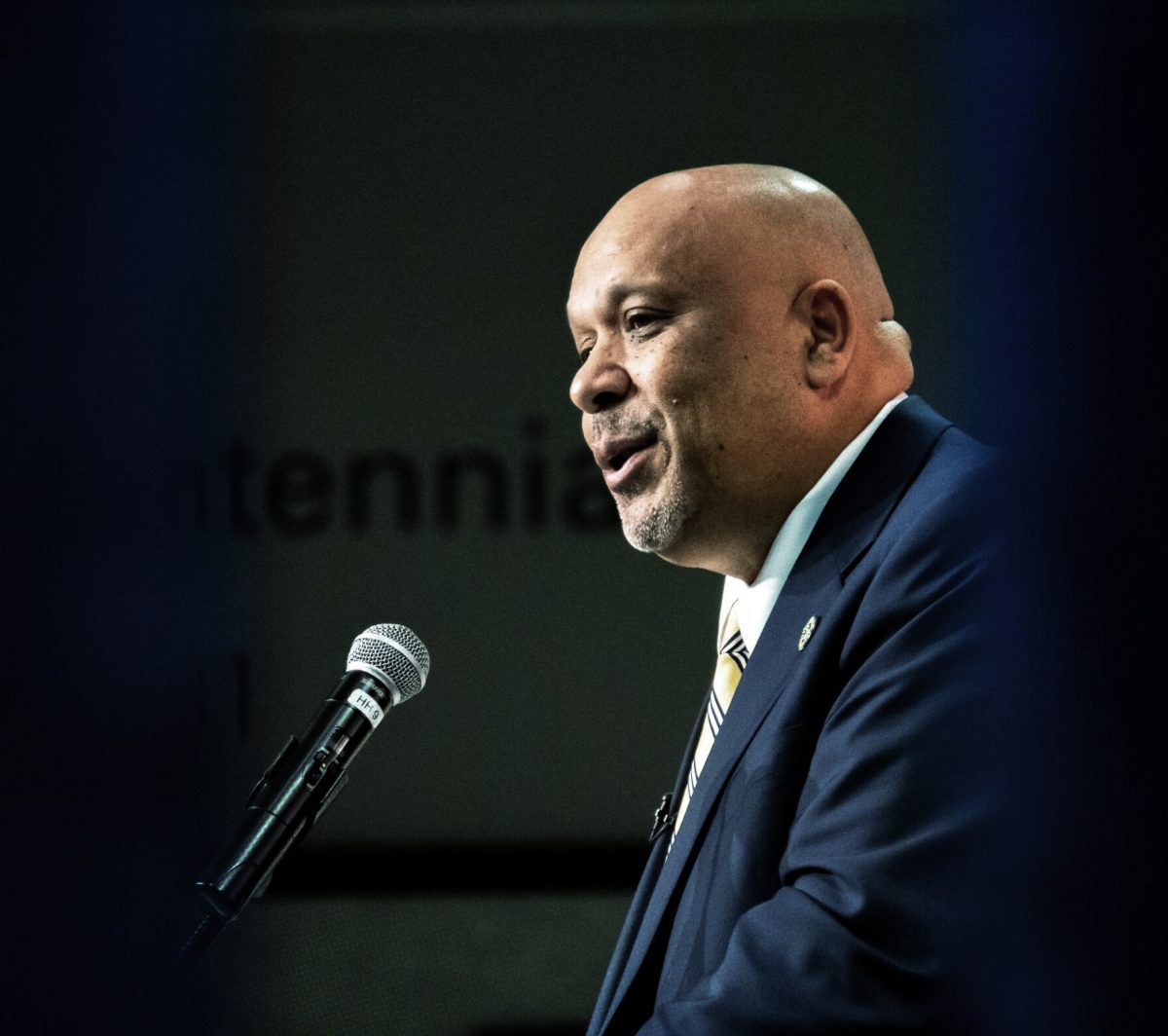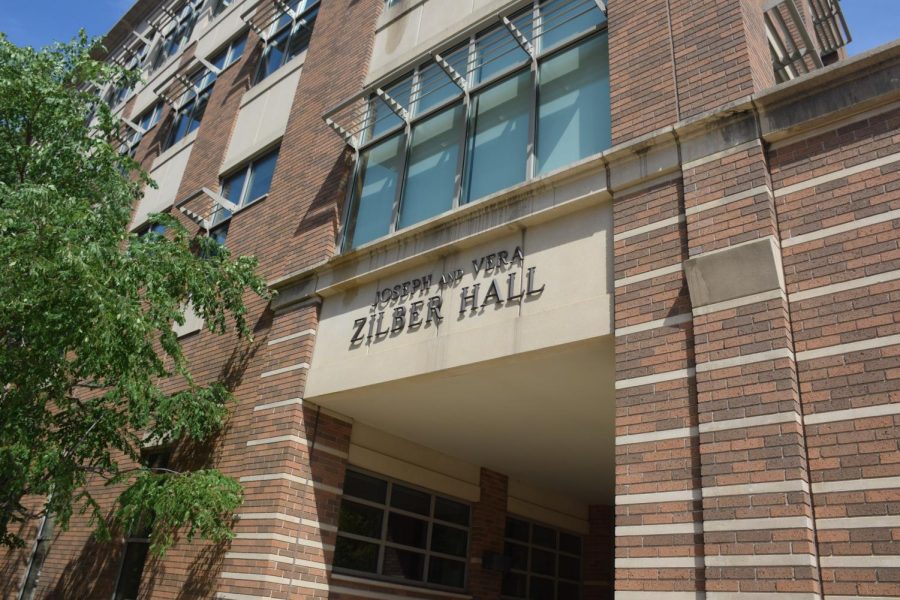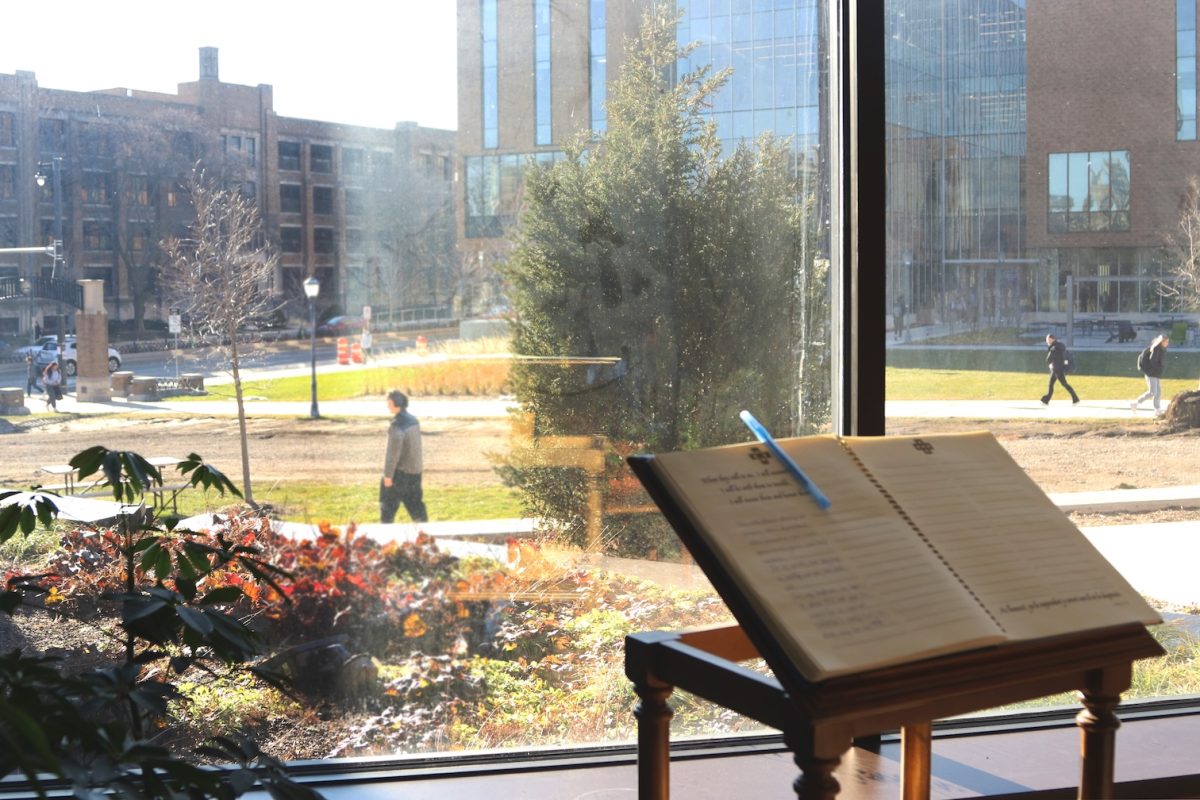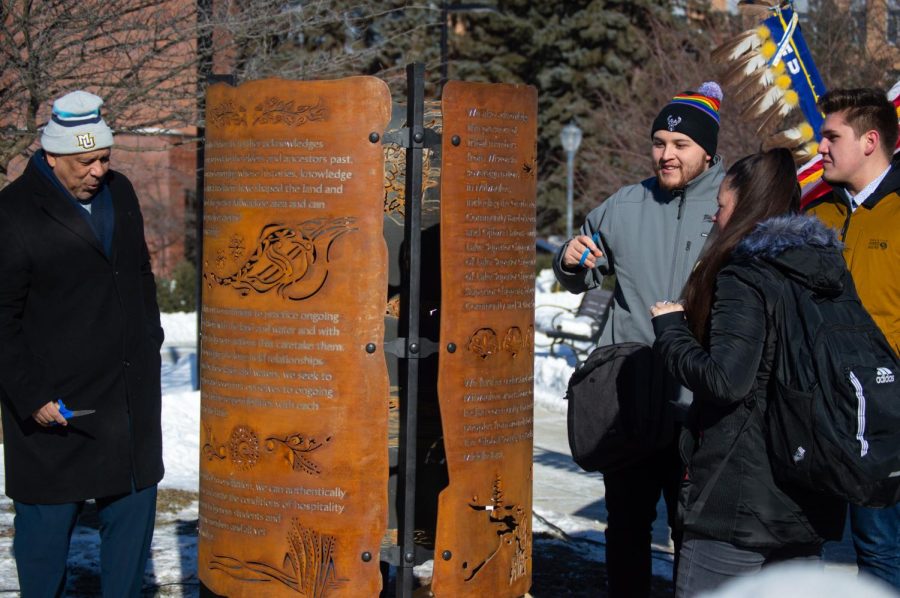When Marquette University introduced a redesigned university seal in 2022, a need arose to change the applications of the former mark, many of which were, quite literally, set in stone.
One of the most significant seal replacements came this past summer, as the new university seal was fixed into the floor design of the Cudahy Hall atrium. The project represents the continuation of a process that began in 2020, when former Marquette President Michael Lovell assembled a committee to update the university seal.
The redesign of the seal was made in an effort to be more inclusive to Indigenous communities, as the previous mark failed to tell an accurate story. The former design featured a cut-off painting of university namesake Jacques Marquette and a Native American man in a canoe.
The original painting by Wilhelm Lambrecht, “Father Marquette and the Indians”, displays Marquette receiving directions from a standing Native guide during his expedition. However, the previous seal did not include Marquette’s navigator, instead depicting Marquette as instructing the Native American man in the canoe.
As the frame communicated a false sense of dominance, relationships became a focal point of the redesigned seal, as it places an emphasis on connectivity within the Marquette community and beyond.
“[The new seal] has a lot more versatility in the way it speaks to relationships,” said Samantha Majhor, an assistant professor of English and a member of Lovell’s committee.
The bottom half of the seal features three stalks of wild rice, which connect the Potawatomi, Menominee and Ho-Chunk Nations that have held the land Marquette University sits on as home.
“The seal is an acknowledgement to the communities that once thrived here and to the alumni and faculty members that worked hard [on it], said Ashaila Jackson, a junior in the College of Arts and Sciences and president of the Native American Student Association, in an email.
“We wanted to give that sort of symbolic reference and reference this long-held relationship in the history of Marquette, going back to Father Marquette,” Majhor said.
The revised seal adds to a history of Marquette working to maintain proper Native representation, Majhor said in reference to the university’s identity change from the Warriors to the Golden Eagles in 1994.
“Marquette has shown itself as a leader to being attuned to shifts in how we look at this kind of representation in society,” said Majhor. “To update those things with a lot of courage, even when there’s pushback, is very meaningful.”
The mark also emphasizes the Catholic Jesuit mission of Marquette University, as the upper-left corner features seven red and gold stripes to “honor the seven heroic brothers from the maternal side of St. Ignatius of Loyola’s family.” Next to the bands lie a Jesuit Christogram that forms the Greek abbreviation for Jesus Christ.
Jacqueline Schram, director of public affairs and special assistant for Native American affairs, was also a member of President Lovell’s committee that updated the seal.
“The culmination of [our] work leaves me breathless still when I see it on banners for dramatic backdrops at university special events, adhered to ceilings, embedded in floors and etched in pediments welcoming all to campus,” Schram said in an email.
The floor of Cudahy Hall is just one of several spaces that has seen the new seal affixed. The mark is visible on the archway leading into the Alumni Memorial Union from Wisconsin Avenue as well as on the stone pillars in the Wisconsin Avenue median.
Despite these fixtures already being in place, the implementation of the blue and white seal into the space of the Cudahy Hall floor takes up a larger physical space than the alterations before it.
“The embeddedness of the seal to me is a publicly facing commitment towards building good relations,” Schram said in an email.
When thinking about the new mark embedded into the floor of Cudahy Hall, Majhor said the project was a physical embodiment of the teamwork involved in the creation of the design.
“[It took a lot of] different people across campus to put this together and to get it right,” Majhor said. “And so I think part of adding the seal in different places and replacing the old seal with the new seal is part of that pride in really coming together.”
Majhor also said the fixture represents the legacy of Lovell, as the seal update stands among his most notable accomplishments during his time as a leader at Marquette University.
“This summer, we lost President Lovell, and I think this will be remembered as one of his signature decisions,” Majhor said. “And a move that he championed, along with the students, and I think it does make a big difference in the community when we can define ourselves in ways that we can be proud of.”
This story was written by Lance Schulteis. He can be reached at lance.schulteis@marquette.edu.












